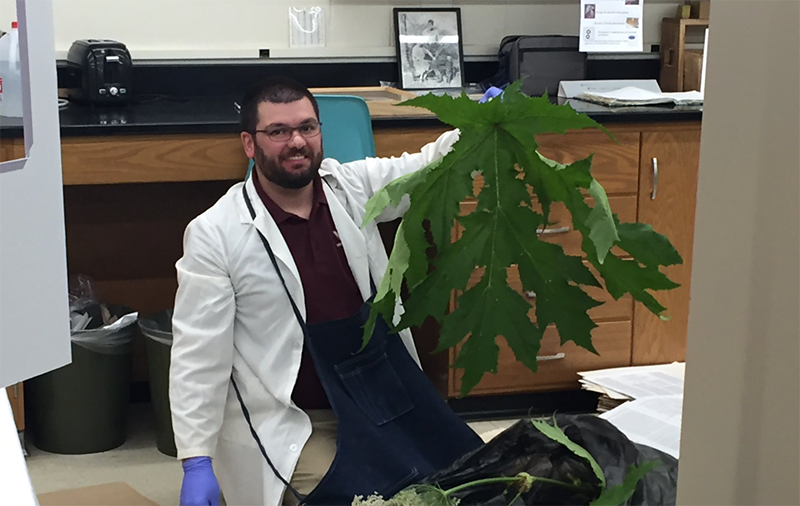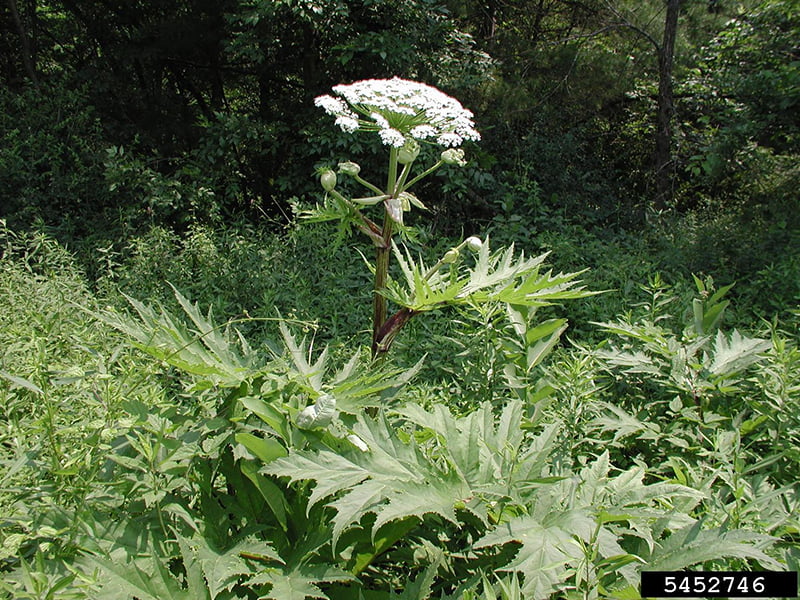No hogweed has been found in the New River Valley or southwest Virginia, according to experts from Virginia Tech.

Jordan Metzgar, curator of the Massey Herbarium at Virginia Tech, has identified plants as the giant hogweed in at least two parts of the state, but so far none have been found here in our part of the state.
Jordan Metzgar, curator of the Massey Herbarium at Virginia Tech, said garden plantings of giant hogweed in Rockingham and Clarke Counties are the closest known plants. There is no evidence the dangerous weed with a toxic sap is spreading.
The Virginia Tech plant experts, working with VDACS officials and Virginia Cooperative Extension, have confirmed the plant growing in Clarke County, Rockingham County, and Fauquier County based on submitted plant specimens. Virginia Tech experts have confirmed an additional site in Alexandria based on photographs.
“There’s not cause for widespread worry. It’s growing where it’s been planted from what we’ve seen. We see little evidence of it widely spreading,” said Virginia Tech’s Michael Flessner, an assistant professor and Extension weed science specialist who has worked closely with Metzgar to identify that the plants are indeed giant hogweed.
According to Metzgar and Flessner, initial management measures have been taken at all four sites, and VDACS will be following up with subsequent site visits.
Giant hogweed is a Tier 1 noxious weed on VDACS’ Noxious Weed List. A Tier 1 classification means the weed was previously unknown in the commonwealth. The Department of Conservation and Recreation (DCR) lists giant hogweed as an early detection invasive plant, which means it is not established in Virginia and, if found, the goal is to eradicate it before it becomes established.
The danger lies in exposure to the skin when the sap from a giant hogweed plant can cause severe skin and eye irritation, painful blistering, and potentially permanent scarring.
In July, a 17-year old Fredericksburg man ended up with second- and third-degree burns after his meeting with a Hogweed plant. Alex Childress came across a large plant while working a landscaping job. The plant briefly brushed his face and arm as he cut it down.

The problem is in the identification of the plant, which is easily confused with other look alike plants such as cow parsnip, elderberry, and others.
The DCR says people who think they have found giant hogweed should take a digital photo of the leaf, stem and flower, being careful to avoid skin contact with the plant.
Information provided by Virginia Cooperative Extension points out the giant hogweed is a very distinct plant when set against Virginia landscapes and although it has some similar characteristics as cow parsnip, angelica, and Queen Anne’s lace, its size sets it apart.
It can grow up to 15 feet tall with leaves as large as five feet across, but most plants identified in Virginia have been 5 to 10 feet tall, with largest leaves approximately 2 feet across. The white flower cluster contains 50–150 flower rays spreading up to two feet across. Giant hogweed also has purple splotches and coarse, sparse white hairs on the stem. The leaf is more incised and angular than cow parsnip, which is giant hogweed’s closest look alike.
Anyone who suspects they have found giant hogweed should take photos, check online to compare the plant to photos, and then contact a Virginia Cooperative Extension agent. People also may contact the VDACS Office of Plant Industry Services at 804-786-3515.


